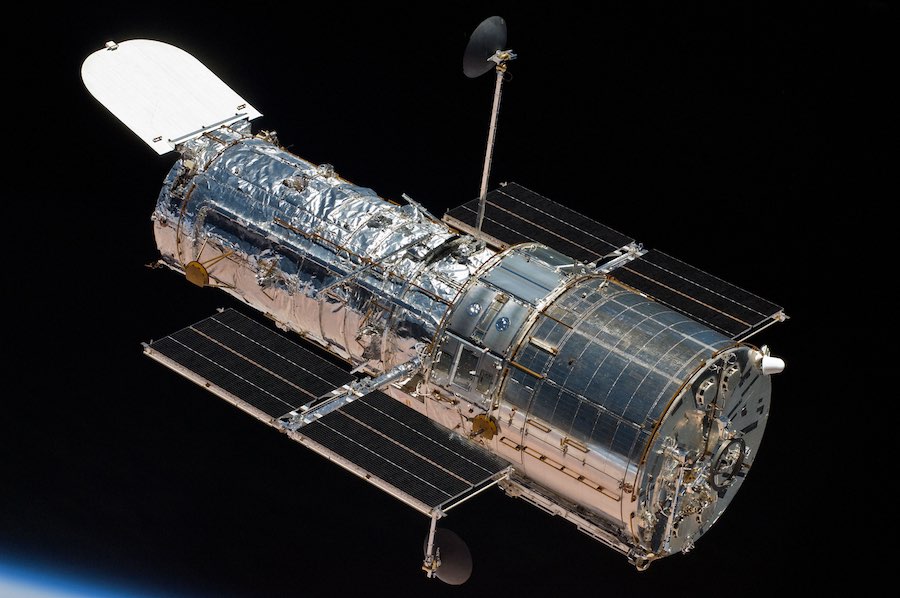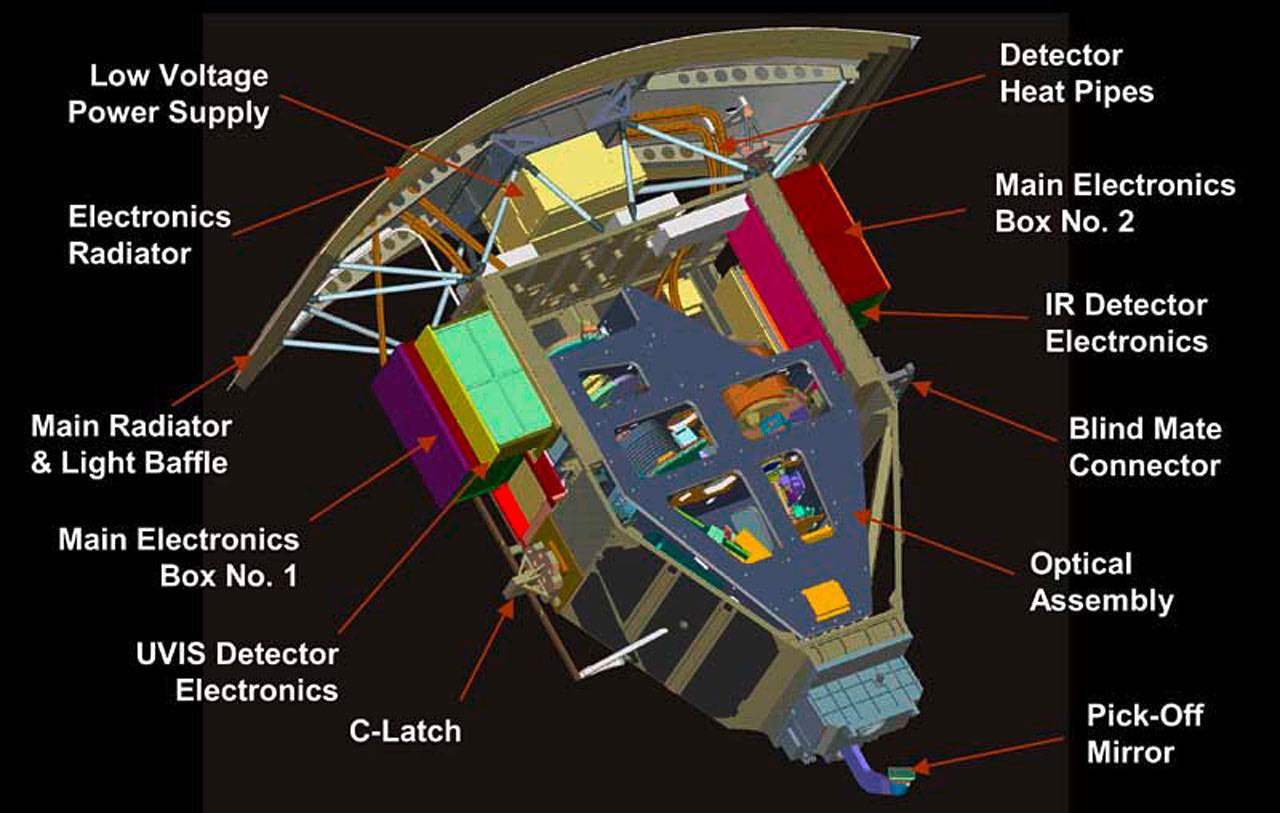EDITOR’S NOTE: Updated Jan. 11 with correction regarding the field-of-view of the Advanced Camera for Surveys instrument.

The partial shutdown of the U.S. government could complicate efforts to troubleshoot a suspected hardware problem with the Hubble Space Telescope’s premier science instrument, but officials are optimistic the camera will eventually be restored to operations, the head of the observatory’s science operations team said Wednesday.
Hubble’s Wide Field Camera 3, responsible for nearly half of the observatory’s scientific output, suspended operations Tuesday when on-board software detected a fault “somewhere in the electronics” of one of its two observing channels, said Tom Brown, head of the Hubble Space Telescope mission office at the Space Telescope Science Institute in Baltimore, which oversees the mission’s scientific operations for NASA.
Brown said the problem on Wide Field Camera 3, known as WFC3, is on the instrument’s ultraviolet and visible light channel. The camera also has a heat-sensitive infrared observing channel.
“It looks like it’s probably some kind of hardware failure on the UVIS (ultraviolet and visible light) side of the instrument, but the instrument has redundancies, and we haven’t tapped into any of those yet in the nearly 10 years it’s been up there,” Brown said Wednesday in a phone interview with Spaceflight Now. “So right now it’s just a matter of making sure we can isolate where the fault is, and then seeing the right path forward, whether it’s bypassing the fault on the current side of the electronics, or bringing up redundant electronics.”
Astronauts on the space shuttle Atlantis’s STS-125 servicing mission in May 2009 installed Wide Field Camera 3 into Hubble’s science bay. Jointly developed by NASA engineers at the Goddard Space Flight Center, the Space Telescope Science Institute, and Ball Aerospace, the instrument is designed for wide field imaging of stars, galaxies and planets in our own solar system.
The camera was also the instrument that first detected Ultima Thule — formally named 2014 MU69 — the distant object in the Kuiper Belt a billion miles beyond Pluto visited by NASA’s New Horizons spacecraft during a speedy encounter New Year’s Day.
Brown is optimistic engineers can bring the camera back online.
“The instrument is going to be brought back up,” he said. “It’s just a matter of what’s the right way to bring it back up … Most of the critical stuff, the electronics and so forth, are redundant, and power supplies and those kinds of things. It’s a matter of going through and isolating where the fault is before you spin up any of those redundancies because you don’t want to do any harm. You want to be sure you understand what the situation is before you bring up any of the spare electronics.”
Thomas Zurbuchen, head of NASA’s science mission directorate, tweeted Wednesday that “issues are bound to happen from time to time” on space missions.
This is when everyone gets a reminder about two crucial aspects of space exploration: 1) complex systems like @NASAHubble only work due to a dedicated team of amazing experts; 2) all space systems have finite life-times and such issues are bound to happen from time to time🤞🛰🌌 https://t.co/1Bd0NcmVVW
— Thomas Zurbuchen (@Dr_ThomasZ) January 9, 2019
The funding lapse of most U.S. government agencies, including NASA, has not had a major impact on troubleshooting the camera anomaly so far, Brown said. The ground team responsible for operating Hubble at the Goddard Space Flight Center is still on duty, but NASA employees on the team are working without pay.
But some experts on Wide Field Camera 3 who could help with the investigation could be furloughed.
“Obviously, we’d prefer to be in a situation where everyone is available,” Brown said.
“We’re assembling what we call a tiger team of experts who were involved either in the assembly of the instrument, or the testing of the instrument back 10 years ago, and once we put together that tiger team, I can imagine the shutdown might impact our ability to get all the experts we might want to talk to,” he said. “But right now, we’re talking to enough folks in industry and at Goddard that we have at least some of the people we want to talk to, and those are the people we’re talking to now.”

Meanwhile, scientific observations using Hubble’s other three instruments are proceeding.
The Advanced Camera for Surveys, an older camera on Hubble, and the Cosmic Origins Spectrograph and the Space Telescope Imaging Spectrograph are unaffected by the Wide Field Camera 3 problem. All the instruments use light collected through Hubble’s 7.9-foot (2.4-meter) primary mirror, then routed through the telescope to camera and spectrograph detectors.
“It’s not like we’re going to have any down time in terms of the science program for Hubble,” Brown said. “It’s just that we’ll put a delay on the scheduling of the Wide Field Camera 3 observations, and press ahead and do the observations on the other instruments earlier than planned. We can do that for quite a long time before we run out of science to do with Hubble. There’s no danger of Hubble running idle right now while we’re troubleshooting.”
Hubble’s camera outage comes three months after gyro failure
Nearly 29 years since its launch, and almost 10 years after the fifth and final shuttle servicing flight to repair and upgrade the observatory, the Hubble Space Telescope continues collecting high-quality science data unparalleled by any other space astronomy mission.
But Hubble is showing signs of its age.
Science observations with Hubble were halted for three weeks in October after the failure of one of the spacecraft’s gyroscopes, which control the telescope’s pointing. The gyro failure left Hubble with three of its six gyros still in operation, and when controllers brought up a reserve gyro, the device showed higher rates than normal. Controllers were able to bring the gyro rates to within usable levels, and Hubble resumed observations in late October using three operating gyros.
The observatory can function with a single gyro if needed, but such an operating mode limits Hubble’s observations to certain swaths of the sky.
Astronauts on the last shuttle repair mission in 2009 installed six new gyroscopes to extend Hubble’s operating life. The three gyros still in operations are “enhanced units” with a longer design life, and all three failed units were based on the older design, according to Brown.
“The three gyros that are left, that we’re operating on right now, are all these enhanced gyros, unlike the ones that have failed to date,” Brown said. “They’re supposed last time five times longer, approximately, compared to the other style. So we’re expecting to last on the gyros we’re operating on now for a long time.
“The same goes for the instruments,” he continued. “Wide Field Camera 3 and COS (Cosmic Origins Spectrograph) have a bunch of redundant electronics systems in them that have not even been tapped yet in the whole decade they’ve been up there. After you use something for a while, whether it’s in space or in your house, like a light you turn off and on every day, stuff eventually wears out and breaks on it. But that’s why we build these things with redundancies. On Wide Field Camera 3, we haven’t used any of those redundancies yet to date.
“The fact that we went nearly a decade before we started tapping into them, that’s a good thing in my mind,” he said. “No one’s happy, going, ‘Oh, yay, finally one of the parts broke.’ But obviously, at the same time, it’s nice that we went a whole decade before we started tapping into any of the redundant systems on it.”
NASA wants Hubble to continue its mission at least until the launch of the James Webb Space Telescope, an oft-delayed mission now scheduled for liftoff in 2021. Webb will fly with a bigger mirror than Hubble, expanding the vision of astronomers deeper into the cosmos.
“We still expect to be using (Hubble) until 2025, or maybe even longer, depending on how things go,” Brown said.
Email the author.
Follow Stephen Clark on Twitter: @StephenClark1.



